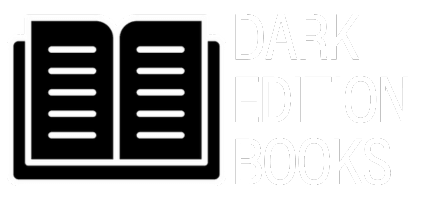
What's It Actually Like to Read a Book with Black Pages?
Share
The first time you open one of our books, your brain does a double-take. Black pages? White text? It looks wrong. Then you start reading, and something clicks.
People ask us all the time: "Is this just a gimmick?" Fair question. Here's what we've learned from readers who've actually spent time with these books.
Your Eyes Adjust Faster Than You'd Think
The first page feels weird. By page three, you stop noticing the reversal. By page ten, regular books start to look glaring and harsh by comparison.
It's the same principle as dark mode on your phone or laptop—once you're used to it, going back feels uncomfortable. White backgrounds suddenly seem unnecessarily bright.
The Eye Strain Thing Is Real (for Some People)
We can't promise this will fix your eye strain. Everyone's eyes are different.
But we've heard from a lot of readers who say they can read longer sessions with these books, especially at night. The theory is that white pages reflect more light, which can tire your eyes faster. Black pages absorb light instead.
Some people notice zero difference. Others swear by it. If you get migraines from screen glare or struggle with nighttime reading, it's worth trying.
They Look Dramatically Different on a Shelf
Let's be honest: part of the appeal is aesthetic. These books don't look like everything else in your collection.
When guests see them, they stop. They pick them up. They ask about them. If you appreciate books as physical objects—not just delivery vehicles for text—the visual impact matters.
They also photograph beautifully, which is why we see them all over bookstagram and BookTok.
The Gothic Novels Hit Different
There's something about reading Dracula or Frankenstein on black pages that just works. The format matches the mood of the content.
We initially focused on Gothic and horror classics for exactly this reason. The dark pages aren't fighting against the atmosphere—they enhance it. Reading Poe on black paper feels right in a way that's hard to articulate until you experience it.
(Though we also publish Pride and Prejudice, which proves the format works for any genre. Some readers just prefer the aesthetic regardless of content.)
Is It Better Than Regular Books?
Depends what you mean by "better."
If you want cheap, fast, and identical to every other copy—regular books win.
If you want something that feels distinct, that makes reading feel like an event rather than routine, that stands out physically and visually—that's where we come in.
These books aren't trying to replace your paperbacks. They're offering a different experience for the books you actually care about. The ones you want to keep, display, and re-read.
The Honest Drawbacks
They're harder to read in bright sunlight. The glare on black pages can be worse than on white pages. These are indoor books or overcast-day-on-the-porch books.
They're not for everyone. Some people try them and prefer traditional books. That's completely fine.
They take getting used to. Don't judge based on the first few pages. Give your eyes time to adjust.
Who Should Try These?
- People who already use dark mode on all their devices
- Readers who do most of their reading at night
- Anyone building a curated book collection, not just accumulating books
- Gothic and horror literature fans
- People who've said "I wish books looked more interesting"
If you're curious, start with a shorter book like The Fall of the House of Usher rather than committing to Pride and Prejudice right away. See how it feels.
Some people discover they love it. Some people decide it's not for them. Both reactions are valid.
We just think more readers should know this option exists.
